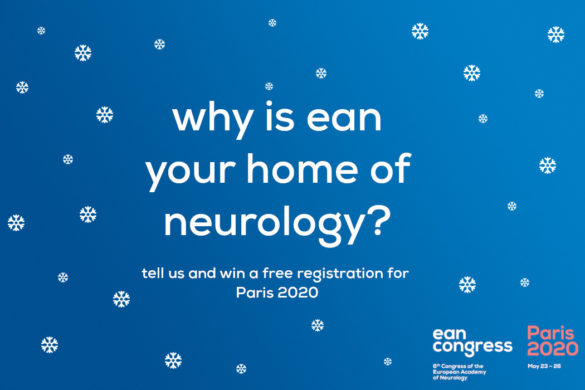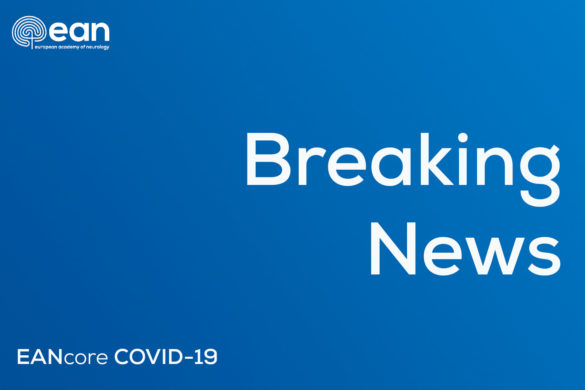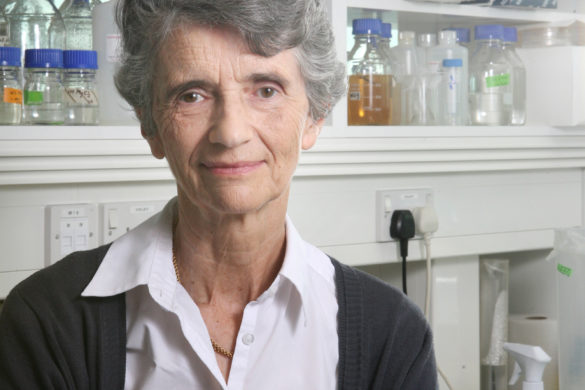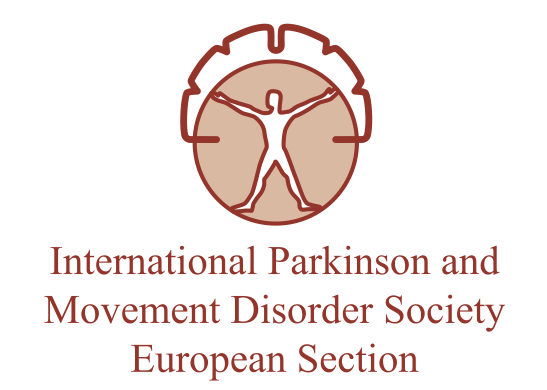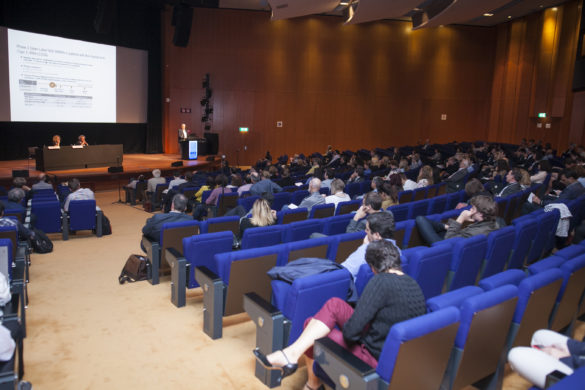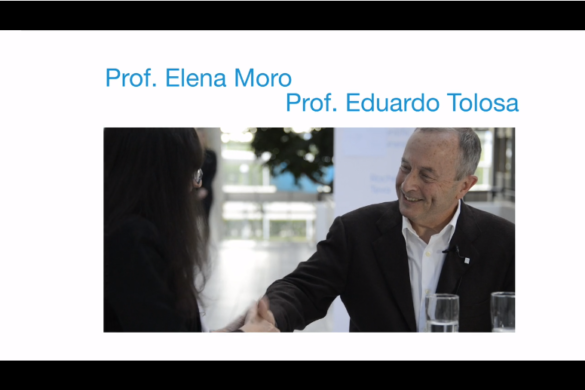by J Alexandre Ribeiro, Instituto de Farmacologia e Neurociências, Faculdade de Medicina e Instituto de Medicina Molecular, Universidade de Lisboa, Portugal
The year of 1949 was a celebrating year for Neurosciences in Portugal, since our professor of Neurology Egas Moniz was awarded the Nobel Prize of Medicine and Physiology, an important recognition of his neuroscience research. This was a mark that very much inspired the interest of our medical school on neurosciences. One might say the Faculty of Medicine of the University of Lisbon (FMUL) gave rise to a pleiad of investigators who latter won celebrity in neurosciences research. Just to mention the most internationally known: Fernando Lopes da Silva, who in consequence of absence of democracy in the country moved initially to England and after to Holland where he did an outstanding career in the area of epilepsy. Also António Damásio, who created the still productive Language Laboratory at the Neurology Department of our Medical School, where he got his PhD, moved to the United States (USA) and became widely known due to his research on the importance of emotions in decision making and thus in our every day’s life. So, one could say that the tradition exists and atmosphere has been created to attract many of the potential neuroscientists to do studies on Neurosciences at the campus of the Faculty of Medicine, which encompassed FMUL itself and the University Hospital, Hospital de Santa Maria (HSM).
An important step was about creating the necessary conditions, namely the financial support and equipment, which really only took place much later. As a consistent strategy, it only started in 1990, due to the Science programme supported by the Portuguese science financing agency, Fundação para a Ciência e Tecnologia (FCT). It was the basis to provide facilities to upgrade laboratories and to make them appropriate to perform updated research in neurosciences. Also the arrival of human resources from the Gulbenkian Institute of Science (IGC), from England and from USA, among other countries, were decisive in the creation of the atmosphere for Neurosciences to have success. At that time, it was possible to create in the region of Lisbon a Center for Neurosciences, encompassing both clinical and basic neuroscientists from the Faculty of Sciences (FCUL) and Faculty of Medicine of the University of Lisbon (FMUL), IGC and NOVA University of Lisbon. This Center for Neurosciences of Lisbon created by the first time conditions for neuroscientists in different institutions and different backgrounds to meet and discuss logistic issues and scientific research. In this integrated structure it was possible to apply for expensive equipment, as confocal microscopy, patch clamp set ups, or transcranial magnetic stimulation, to study the brain and its diseases. These conditions allowed FMUL campus, according the web of science (WOS), to increase its number of publications in Neurosciences; from 1990 to 2003 a total of 303 papers (abstracts excluded) were published (average per/year = 21.6 publications).
One decade elapsed between the birth of the Center for Neuroscience of Lisbon and the emergence of the idea of Associated Laboratories. Aiming to boost research in Portugal, the Minister of Science at the time, Mariano Gago, promoted the creation of research structures in order to joint research groups that had been evaluated as very good or excellent. The idea was to enlarge the critical mass to discuss and produce science with further impact in scientific training. This gave rise to the Associated Laboratories into Portugal. The one created in FMUL campus in 2002, was called Institute of Molecular Medicine (IMM). Indeed, IMM was created to joint efforts of basic and clinically oriented research centers of FMUL, who have been evaluated as very good or excellent. Among them were the clinical and basic neuroscience research groups. This lead to profound changes in the Center for Neurosciences of Lisbon. From one hand, the group that in the 90’s was at IGC had already moved to FMUL (leading to the creation of the Laboratory of Neurosciences at FMUL) due to changes in the scientific policy of the Gulbenkian Foundation. On the other hand, the FCUL group created a center at its school, and the same occurred in part with the group at the Nova Medical School. The FMUL component of the Center for Neurosciences of Lisbon, thus encompassed the Laboratory of Neurosciences, and the Neurology Department (Clínica Universitária de Neurologia). The idea of the professors of the Clinical Neurosciences at the time was that the investigators recently arrived from IGC (Laboratory of Neurosciences) together with the neurology researchers (Clínica Universitaria de Neurologia), could create a sort of Research Brain Center incorporating basic, clinical and translational research. However, with the emerging idea of IMM, the decision was to joint efforts with other research areas of excellence at FMUL. Neuroscience research groups (basic and clinically oriented) thus constituted a strong pillar of this Associated Laboratory. Initially the Neurosciences cluster at IMM was composed of two Units, the Basic and Functional Neurosciences Unit and the Clinical Neurosciences Unit. These two Units then split into three, with the more integrative functional neurosciences splitting from basic neurosciences. Besides these, several other groups were joined IMM, some become independent neuroscience groups within IMM, others leave to join other research centers, some groups with a main focus in other areas as immunology, biochemistry or molecular biology gained interest in neurosciences resulting in joint research projects. All this reflects the dynamism of Neurosciences at IMM and at FMUL.
IMM gained further coherence in 2004 with the inauguration of a new building at FMUL, the Edifício Egas Moniz. This facilitated the localization of all the basic research centers of the FMUL. At this time also, the Laboratory of Neurosciences merged with the Institute of Pharmacology, constituting the Institute of Pharmacology and Neurosciences, devoted to neurosciences and neuropharmacology, located at the Egas Moniz Building. The Autonomic Nervous System Unit, at the Institute of Physiology, later merged with the Movement Disorders Unit, also located at the Edifício Egas Moniz. The Clinical Unit mostly remained at the Hospital building and was dedicated to stroke, language, sleep, epilepsy, Parkinson’s disease, memory and Alzheimer’s disease. The group interested on Alzheimer’s Disease and memory dysfunction is located at the Egas Moniz building. These frequent reorganizations, reflect a vivid structure and are related to challenges in some of the shared financed projects and interests of the group leaders.
Since the turn of the millennium, the critical mass, staff, post-docs, PhDs and MS students in Neurosciences were significantly increased in number and in qualified formation to participate in advanced research. Nowadays, there are at least three weekly research seminars/scientific sessions. Lectures by invited neuroscientists, either from other Portuguese research centers or from abroad, are frequent. This increase in critical mass was instrumental to increase competiveness and success in science. From the 303 publications in Neurosciences/Neurology (WOS) in the 14 years (between 1990 and 2003, see above) we jumped to 832 publications (abstracts excluded) in the last 14 years (2004-2017; average per/year = 59.4 publications). A yearly analysis reveals a continuous grow, the number of publications attaining a value of 171 (WOS, abstracts excluded) in 2017 (an average of one paper every two days). The impact of the publications that have been published in the research area of Neurosciences/Neurology (WOS) at the FMUL campus is also high. In the last 14 years (2004-2017), the number of quotations of all papers published in this research area overpassed 24000, being close to 4000 in 2017.
The increase in the scientific research in Neurosciences at FMUL paralleled with the increase in the post-graduation capacity. By the turn of the Millenium, FMUL implemented a Master and later also a PhD programme in Neurosciences, which were registered at the platform created by the Federation of European Neuroscience Schools (FENS). Also a FCT PhD programme in Integrative Neurosciences denominated NeurULisboa, was awarded with FCT fellowships.
Perhaps inspired in the Center for Neurosciences of Lisbon and following the tradition of inter-institutional relationship, the Mind-Brain College financially supported by the newly merged University of Lisbon was created in 2014. The College aims to promote interdisciplinary interactions between all groups with interest in Mind or Brain Research at the University of Lisbon, developing efforts to decrease the gap between our knowledge of the Mind and of the Brain. Acknowledging that the most efficient promoters of boundaries crossing are the youngest, the College is an umbrella of several PhD Programmes related to Cognitive Sciences or Neuroscience at the University of Lisbon. Research groups from the Faculty of Medicine (Neurosciences/Neurology and Psychiatry), Faculty of Sciences, Faculty of Psychology, Faculty of Pharmacy, Faculty of Arts and Humanities (Cognitive Philosophy and linguistics), Faculty of Law (Neurolaw), Engineering (Instituto Superior Técnico) and Institute of Social Sciences, meet regularly to implement cross-interaction activities.
In conclusion, there exists now and going at the University of Lisbon a competitive research and impact of both Clinical and Basic Neurosciences, which now overflows to other related areas. To this one can add that the critical mass in Neurosciences all over Portugal is also, being one of the most robust research areas within the Health Sciences, according to the number of publications listed in the WOS. When the seed is good, the soil fertile and the care with it intense, the crop grows. In Neurosciences in Lisbon and also in other towns in Portugal we are lucky since we had several farmers.




